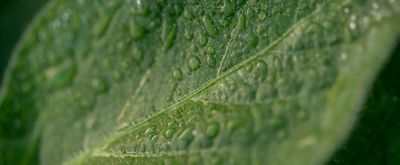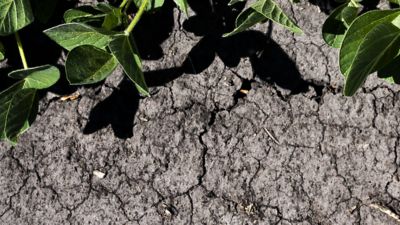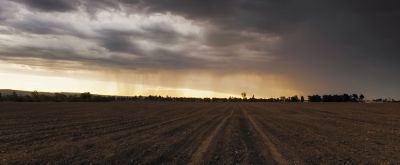How Excessive Rain Impacts Soybean Planting
If soil around germinating soybeans is waterlogged for two days, yield losses may be minimal. Any longer, and you will see measurable losses — even plant death.
Read MoreWhen is the right time to plant soybeans? Unfortunately, there’s no simple answer. Soil composition, temperatures, field history, weeds and pests all impact soybean seedlings. Let’s look at how weather events play a role, too.
Moisture sets the soybean germination process in motion. A soybean seed must take in 50% of its weight in water to initiate germination. If a soybean seed absorbs water for six hours, but then dehydrates to 10% moisture, it can continue to germinate.1
To boost yield, growers have begun to plant soybeans earlier in the season. The traditional approach has been to plant between early and mid-May, depending on your region and soil composition. However, mounting evidence suggests there can be benefits to planting in late April.2
Moisture and temperature are the two most important factors if you’re looking to plant early. Here’s what you’re aiming for:
To be clear, planting earlier is beneficial only if conditions are suitable. Beware of puddling, poor drainage, or saturated soil. These conditions can increase the risk of injury from sudden death syndrome.
Planting into cold, wet soils also increases the risk of seedling diseases like Phytophthora, Pythium, Rhizoctonia or Fusarium. Early planting can also coincide with high populations of soybean pests like bean leaf beetles. However, applying a seed treatment before planting can help protect your soybeans as they grow.
It’s important to plan for the weather as it becomes more unpredictable each year. One U.S. Department of Agriculture study concluded that U.S. growers should prepare for rising temperatures and mild declines in precipitation over the next few decades. For soybeans specifically, this lack of rain and extreme heat is estimated to result in a decrease of 3% yield bu/a.3
El Niño and La Niña events may also be a factor for your soybean planting timeline. Here are some general things to expect with each:
In 2022, April was one of the wettest months on record due to La Niña, with effects lasting into the summer. And El Niño conditions that began in October 2023 continued until April 2024.4 Just remember to weigh the risks and benefits of early planting. If the conditions are not right, you are better off sticking to conventional wisdom.

If soil around germinating soybeans is waterlogged for two days, yield losses may be minimal. Any longer, and you will see measurable losses — even plant death.
Read More
There is potential for a higher-than-normal carryover response to herbicides applied the prior season — but there are a few ways to reduce risk.
See HowStay on top of industry insights and the latest farming techniques with Pioneer's email newsletter. Sign up now to join the Pioneer community and get curated content sent directly to your inbox.
1. "To Plant or Not to Plant?” R. Vann, D. Houlshouser, NC State Extension, 2019. https://soybeans.ces.ncsu.edu/2019/05/to-plant-or-not-to-plant/
2. "Soybean planting date can have a significant impact on yield,” Iowa State University, 2023. https://crops.extension.iastate.edu/encyclopedia/soybean-planting-date-can-have-significant-impact-yield
3. "Estimating Market Implications from Corn and Soybean Yields Under Climate Change in the United States,” J. Beckman, M. Ivanic, N. Nava, U.S. Department of Agriculture, Economic Research Service, 2023. https://www.ers.usda.gov/webdocs/publications/107552/err-324.pdf?v=7227.4
4. "El Niño expected to last until at least april 2024,” World Meteorological Organization, 2023. https://wmo.int/news/media-centre/el-nino-expected-last-least-until-april-2024
